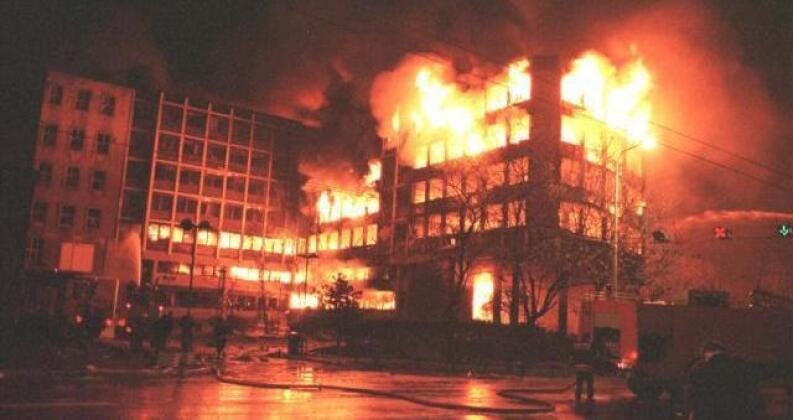This Week in China's History: The Bombing of China's Belgrade Embassy
May 7, 1999
On the night of May 7-8, 1999, an American B-2 “stealth” bomber, part of NATO operations against Yugoslavia, launched bombs against targets in the Serbian capital, Belgrade. NATO forces were part of an effort to stop the ethnic cleansing being carried out in what was then the Kosovo region of Serbia, which NATO said was being perpetrated by Slobodan Milosevic and Bosnian Serbs. The war was controversial, both in terms of its legitimacy and its effectiveness, and had begun just a month earlier.
According to official U.S. government sources, the bombs were targeting a Yugoslav military target. There is much controversy about what the target was, how it was arrived at, and who made those determinations, but the result was indisputable. Sometime after midnight, local time, five precision-guided bombs landed on and exploded in the compound of the Embassy of the People’s Republic of China, reducing the building to rubble. The attack killed three journalists and injured more than 20 Chinese nationals, and was immediately the center of an international diplomatic furore.
That the weapons in question were informally known as “smart bombs” was a bitter irony, because the attack could scarcely have been any less intelligent. American officials immediately expressed regret at what had happened, saying it had been a mistake: the bombs did hit their intended target, but U.S. intelligence claimed that an outdated map had been used. American officials had even checked, they asserted, the target against a list of “no strike” locations, including hospitals, churches, and, yes, foreign embassies, but because the Chinese embassy had recently — several years earlier — moved to a different address, it did not come up on the list. Moreover, although the United States was integrated into NATO operations, in some cases it maintained its own parallel command structure rather than submitting its forces to NATO orders. NATO was not authorized, for instance, to operate the B-2 bomber, which carried out the mission, and so the targeting process was done exclusively within American command and control processes. This meant both that the faulty intelligence on which the U.S. attack was based was not checked against European information and that approval for the strike rested solely within American authority.
Keep reading with a 7-day free trial
Subscribe to Sinica to keep reading this post and get 7 days of free access to the full post archives.



